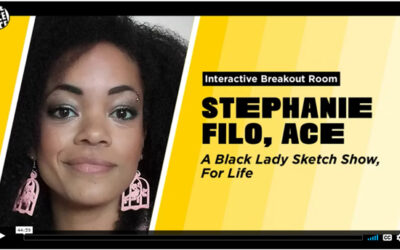Featured in Content:
CWL videos | Movies | Videos


Ang Lee’s exquisite martial arts drama was nominated for 10 Academy Awards and won four including best foreign language film, cinematography, score and art direction. Its additional nominations include best picture and direction, as well as best editing for Lee’s regular collaborator, Tim Squyres, ACE, who was also BAFTA and Eddie Award nominated for his work.

Crouching Tiger, Hidden Dragon is credited with opening up the Chinese Wuxia genre to Western audiences, one of the staples of which is the treatment of fight scenes as a dance

“Ang grew up in Taiwan but he’s also very rooted in American cinema and wanted this film to appeal to the world,” says Squyres. “At the time this kind of fighting was not present in Hollywood movies.

A prime example is a duel between once friends, now rivals, Shu Lien (Michelle Yeoh) and Jen (Zhang Ziyi). The confrontation takes place in the training studio of a martial arts compound that contains different sorts of weapons on racks on the walls. Shu Lien is the superior fighter but Jen wields the Green Destiny, a sword that destroys each weapon that Shu Lien wields

“Nothing was storyboarded,” Squyres says. “In the script it would say ‘they fight,’ so I had to figure it out from the footage. But it was tightly choreographed by Yuen Woo-ping.”

He continues, “In Bruce Lee films the style is like a staccato. Here it is more flowing. A lot of that depends on the actors. Michelle is terrific at martial arts and Ziyi was a dancer, so I didn’t have to do a whole lot of work to hide any issues.

“In a number of places they rolled the camera at 23 frames instead of 24 so the actors could slow down a touch and be a little more precise in their movements. There are also a couple instances of slow motion which is used for clarity. Ang was interested in showing how a particular weapon works in this particular way or to explain that this blow wasn’t a hit – it was a deflection. Broadly, I didn’t want this scene to get too dreamy. I wanted to keep it visceral.”

The music in the scene is composed by Tan Dun but it closely matches the Japanese drumming track that Squyres employed as temp. “The rhythmic drumming was very effective at making the scene flow well,” he says

While the production shot for 128 days in China, Squyres was assembling in New York from undeveloped negative shipped to DuArt for processing once or twice a week. “There were times I was a month behind camera since I wasn’t getting the material,” he says. “I would often get script notes a week or two after I got the footage. In fact, during the shoot I only talked to Ang twice

Nonetheless, this scene changed little from first assembly. “In editorial we cut the fight scenes first in order to leave room for wire removal and VFX. From assembly to picture lock was only seven weeks. Because of that tight schedule we didn’t preview the film anywhere. We were afraid there would be not enough fighting for the martial arts crowd and too much fighting for the arthouse crowd who would go see a subtitled film, and we wouldn’t please anybody

“Turned out it was one of those films that transcended cinema and moved into wider culture. Kill Bill (2003) probably wouldn’t have happened had it not been for Crouching Tiger showing the studios that there was an appetite for this style of fighting. It took martial arts out of its niche.”

3rd QUARTER, 2022
Message From the Board
FEATURES
Moon KnIght
Only Murders In the Building
Ozark
Russian Doll
Succession
They Call Me Magic
Top Gun: Maverick
EDITOR’S CUT
NAB Returns to Vegas
ACE Annual Meeting
STOCK FOOTAGE
Tech Corner
Cuts We Love
IN MEMORIAM
John Martinelli, ACE
EditFest Sneak Peeks
ACE EditFest 2022
Download PDF version 4th QUARTER, 2022Message From the Board FEATURESThe Woman KingEverything...
Susana Benaim- 2022 EFG Breakout Session
ACE presents the Breakout Room Session featuring Kirk Baxter, ACE, editor of “The Social Network, Mank” Moderated by Megan Keen (Adobe) for ACE EditFest 2021.
Stephanie Filo ACE- 2022 EFG Breakout Session
ACE presents the Breakout Room Session featuring Kirk Baxter, ACE, editor of “The Social Network, Mank” Moderated by Megan Keen (Adobe) for ACE EditFest 2021.



